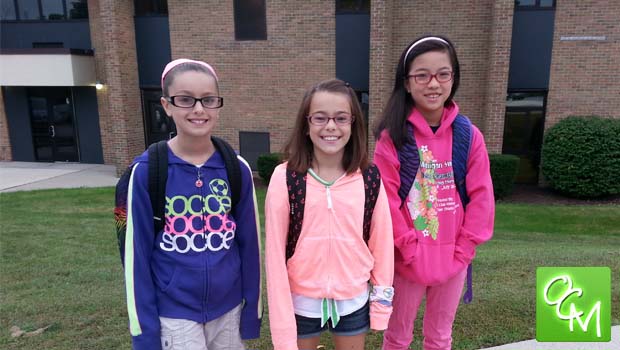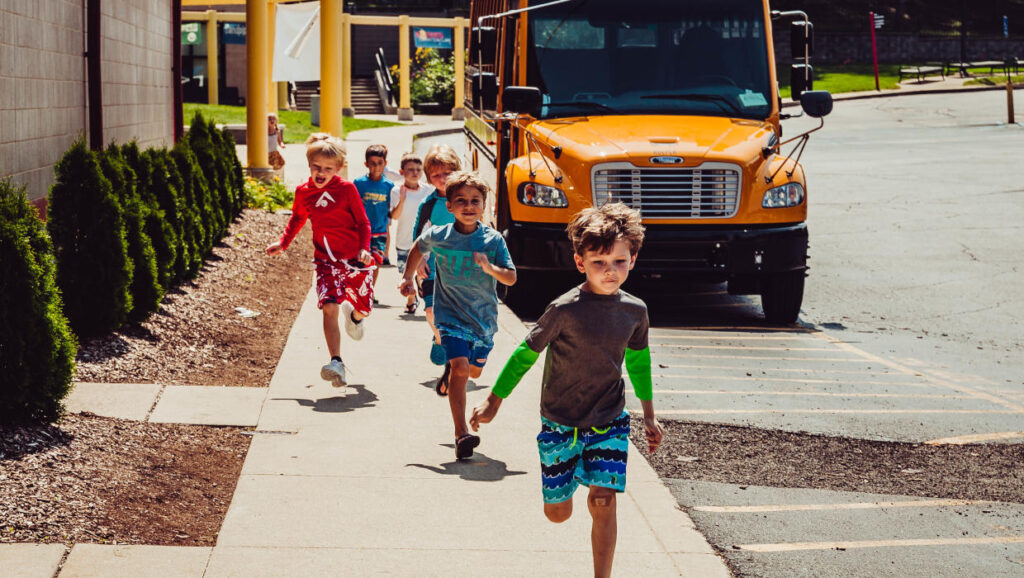Back to School Transition Tips for Parents – Dr. Kat Lewitzke of Bright Pine Behavioral Health in Clarkston offers tips & advice for effective parenting strategies for a smooth back-to-school transition.

OAKLAND COUNTY MOMS FAMILY HEALTH & BEHAVIORAL HEALTH ARTICLES
Effective Parent Strategies for a Smooth Back-to-School Transition
Written by: Dr Kat Lewtizke, PsyD LP
As a psychologist, mother of two young children (a 4-year-old entering pre-k and a 6-year-old starting 1st grade this fall), and the clinic director and managing partner at Bright Pine Behavioral Health, a private mental health clinic specializing in psychological testing and therapy services in Troy, West Bloomfield, and Clarkston, Michigan—I deeply understand the importance of a smooth and stress-free transition back to school.
Having navigated my son’s anxiety with effective strategies, I’ve seen firsthand how these approaches can transform the back-to-school experience. These methods have not only benefited my own children but can also make a significant positive impact on other families too.
Here are my ten practical back to school transition tips that I have personally implemented as a parent and highly recommend to all the parents I consult with.

Back to School Transition Tips for Parents
1 – Back to School Transition Tips – Talk About Feelings – Encourage open conversations with your child about their feelings regarding the new school year. Validate their emotions and reassure them that it’s normal to feel a mix of excitement and nervousness. By actively listening and acknowledging their concerns, you create a safe space for your child to express themselves. This open dialogue can alleviate fears and build a stronger parent-child bond.
2 – Read “The Kissing Hand” – For younger children, reading “The Kissing Hand” by Audrey Penn can be a comforting ritual. The story helps children understand that they are always connected to their parents, even when apart. The simple act of a kiss on the hand can be a powerful reminder of parental love and support throughout the school day. Incorporating this story into your routine can make the separation easier and give your child a tangible source of comfort.
3 – Make Bracelets for Connection – Create bracelets together that your children can wear to school. When they feel sad or anxious, touching the bracelet can remind them of their family’s love and support. This small, tactile reminder can provide significant emotional reassurance. Making the bracelets together can also be a fun and bonding activity, reinforcing the connection and support within the family.
4 – Back to School Transition Tips – Use a Visual Calendar – Put up a visual calendar with important dates and events. This helps children anticipate what’s coming and feel more in control of their schedule. A visual calendar can reduce anxiety by making the abstract concept of time more concrete. Include school events, family activities, and special occasions. Encourage your child to participate in updating the calendar, which can enhance their organizational skills and sense of responsibility.
5 – Visit the School – If possible, visit the school playground and walk around the campus before school starts. This can help your child become familiar with the environment and reduce first-day jitters. Familiarity with the physical space can make a new or returning school setting feel less intimidating. If you can, arrange a meeting with the teacher or a brief tour of the classroom, which can provide additional comfort and familiarity.

6 – Involve Kids in Back-to-School Shopping – Allow children to participate in shopping for school supplies. Choosing their backpack, clothes, and other items can boost their excitement and give them a sense of control over the new school year. This involvement can make the transition feel like a special event rather than a daunting change. Discussing and planning the shopping trip together can also be a great opportunity to set expectations and discuss the upcoming school year.
7 – Back to School Transition Tips – Adjust Bedtime Routine – Start resetting bedtime earlier each night 1-2 weeks before school starts. Adequate sleep is crucial for children’s cognitive functioning and emotional regulation. Reducing screen time before bed can also improve sleep quality. Establishing a consistent bedtime routine helps ensure your child is well-rested and ready to learn. Activities like reading a book, taking a warm bath, or practicing relaxation exercises can help signal to your child that it’s time to wind down.
8 – Back to School Transition Tips for Parents – Implement a Visual Checklist – Create a visual checklist of tasks children need to complete before leaving for school in the morning and after school. This helps children stay organized, build independence, and ensures nothing is forgotten. Visual checklists can include pictures or icons for younger children who can’t read yet. Regularly reviewing and updating the checklist together can reinforce the routine and encourage a sense of accomplishment.
9 – Psychotherapy for Emotional Functioning – Consider the benefits of therapy and counseling for children with anxiety, ADHD, or autism. Psychotherapy can help children develop coping strategies, improve emotional regulation, and enhance social skills. Play therapy, in particular, allows children to express their feelings and work through issues in a safe and supportive environment. A trained therapist can tailor interventions to your child’s specific needs, promoting resilience and emotional well-being.
10 – Back to School Transition Tips – Psychological Assessment for Learning Issues – If your child is struggling with learning issues, ADHD, or autism, a psychological assessment can be beneficial. Assessments can identify specific challenges and strengths, leading to targeted interventions and support. This can improve academic performance and overall well-being. Understanding your child’s unique learning profile can also guide teachers in providing appropriate accommodations and support, ensuring a more effective and positive educational experience.
MORE FROM BRIGHT PINE – HELPING TEENS WITH DEPRESSION
MORE FROM BRIGHT PINE – EARLY SIGNS OF AUTISM OFTEN MISSED BY PEDIATRICIANS
MORE FROM BRIGHT PINE – IS YOUR CHILD MISDIAGNOSED WITH ADHD?
MORE FROM BRIGHT PINE – BACK TO SCHOOL TRANSITION TIPS FOR PARENTS

Back to School Transition Tips for Parents / Final Thoughts
Implementing these strategies can help ensure a smooth and successful start to the new school year for both parents and children. As someone who has navigated these challenges with my own children, I can attest to the positive impact these approaches can have. By fostering open communication, providing emotional support, and creating a structured environment, you can help your child transition back to school with confidence and positivity. Let’s embrace the back-to-school season with enthusiasm and a proactive mindset! Did you enjoy this article and want more tips? Check out 20 more helpful back-to-school tips on my clinic’s website.
ABOUT Bright Pine Behavioral Health Clarkston
Bright Pine Behavioral Health is a private mental health practice located in Oakland County at 3 locations – Clarkston, Troy, and West Bloomfield. They provide comprehensive standardized neuropsychological assessment and therapy services for the treatment of behavioral problems, mood, anxiety, and neurodevelopmental conditions. Bright Pine Behavioral Health Clarkston works with children, teens, and adults.
Bright Pine Behavioral Health Clarkston
6060 Dixie Highway, Suite H
Clarkston, MI 48346
248-455-6619
www.brightpinepsychology.com

For more back to school transition tips, contact a professional at www.brightpinepsychology.com

